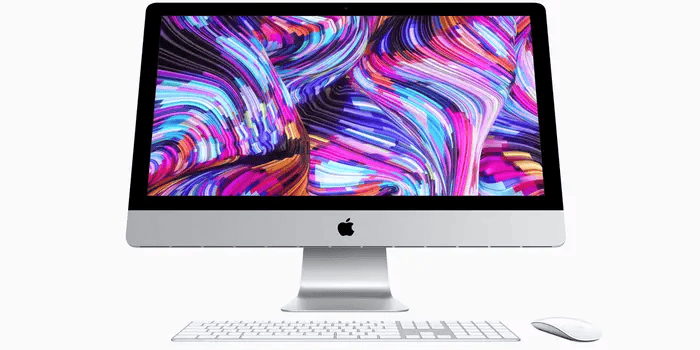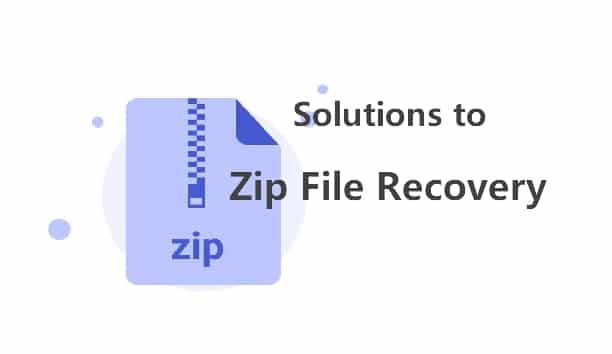Accidentally deleting or losing a partition on your Windows system can be a distressing experience, as it may result in the loss of valuable data. However, the good news is that with the right tools and methods, it’s often possible to recover deleted or lost partitions and retrieve your important files. In this guide, we will walk you through the steps to recover deleted or lost partitions on a Windows system.
Important Notice Before Recovering Lost Partitions
Before starting the process of recovering a lost partition on Windows, it’s essential to take certain precautions and make necessary preparations to maximize the chances of successful recovery and minimize the risk of further data loss. Here’s a checklist of what to prepare before attempting to recover a lost partition:
❌ Stop using the affected drive right away.
❌ Do not create a new partition or reformat the drive.
✅ Backup other important data that hasn’t been lost.
✅ Ensure that all cables and connections between your hard drive and the computer are secure.
✅ Identify the cause (if possible).
✅ Consult professional help (if unsure).
Why Do I Lose Partitions on Windows?
Before getting down to retrieving your partitions, we should figure out the real causes of your loss. Here are some usual suspects and how you can fix it:
| Causes | Description | Solutions |
| Accidental Deletion | The simplest as well as the most common reason for partition loss is accidental deletion or formatting. This usually happens when users manage disk spaces or install operating systems. | Method 4 |
| Partition Table Corruption | The partition table acts as a map for your hard drive, directing where each partition starts and ends. Corruption here can render partitions invisible or inaccessible. | Method 3 |
| Improper Partition Resizing or building | Users can tweak the size of created partitions. But the process is highly risky. Unexpected events like sudden interruptions can put your partitions in danger. | Method 1 or Method 2 |
| Virus or Malware Attacks | If you do not regularly update and run antivirus programs, malicious software may secretly wreak havoc, corrupting or deleting your partitions. | Method 4 |
| Improper System Shutdowns | Frequently turning off your PC without proper shutdown procedures can damage file systems, leading to potential partition loss. | Method 3 or Method 4 |
How Do I Recover Lost Partitions on Windows?
When your partition disappears, the data is not truly gone in many cases—it is just inaccessible or hidden. Having spotted the reason for your loss, you can choose the methods suitable for your specific situation to reclaim your lost digital territory:
Method 1: Assigning a Drive Letter
Sometimes you cannot find a specific partition because it has not been given a drive letter. The File Explorer fails to recognize it, but you can see on Windows’ built-in Disk Management that there’s still space used by it. You can solve this by assigning a drive letter.
Step 1: Head over to Disk Management, right-click on the lost partition, and select “Change Drive Letter and Paths”.
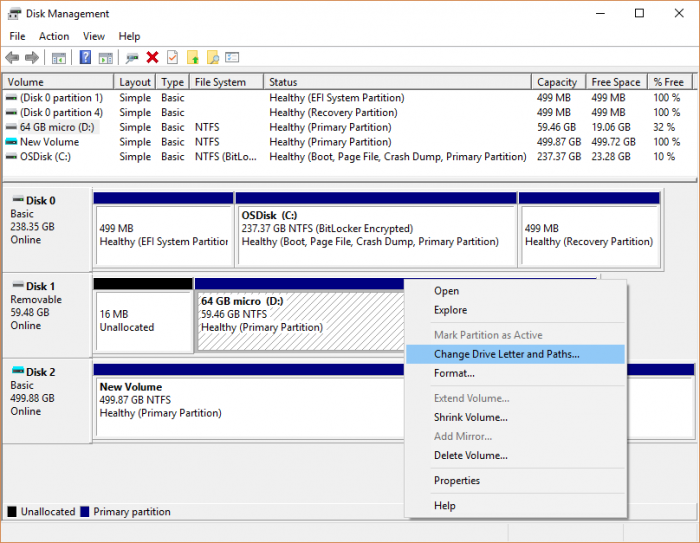
Step 2: Click on “Change”.
Step 3: Drop down the “Assign the following drive letter” menu and select a letter.
Now, go check if you can access the partition on File Explorer.
Method 2: Restore an Unallocated Space to the Partition
If method 1 does not work, your lost partition probably becomes unallocated space. You should find the unallocated tab under Disk Volume on Disk Management, and then:
Step 1: Right-click on the unallocated tab.
Step 2: Choose “New Simple Volume” and click on Next > Next.
Step 3: Specify the volume size.
Step 4: Drop down the “Assign the following drive letter” menu and select a letter.
Step 5: Hit Next, and make sure you choose “Do not format this volume”.
Step 6: Click Next and then Finish. Now, the unallocated partition becomes a RAW partition.
Method 3: Recover Lost Partition Using CMD
Step 1: Press Win + R to open the Run dialog box. Type CMD and then press Ctrl + Shift + Enter to run Command Prompt as an administrator.
Step 2: Type diskpart in the window and press Enter.
Step 3: Type the following commands one after another, ending with pressing Enter each time:
- list disk
- select disk # (Replace # with the number of the hard drive that contains the lost partition.)
- list volume
- select volume # (Replace # with the number of the lost partitions)
- assign letter=# (Replace # with an available drive letter)
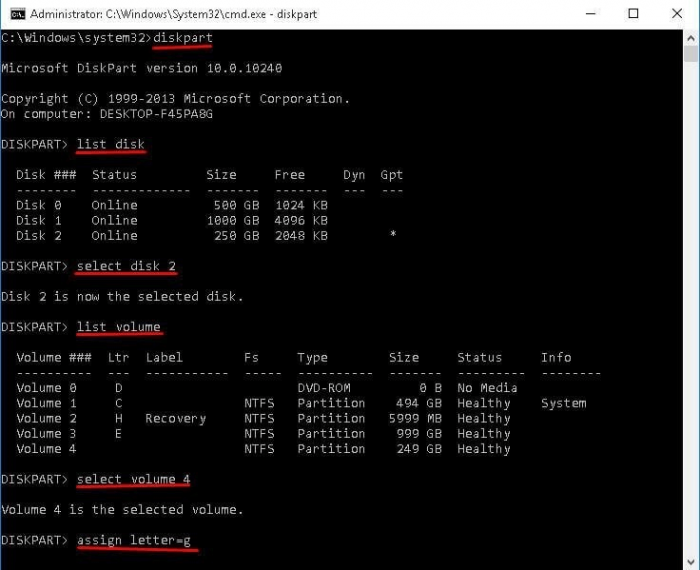
Step 4: Exit this window and see if you can access that partition.
Method 4: Use Professional Recovery Software
If you don’t bother to follow all the above-mentioned methods, it is okay because there is a myriad of novice-friendly and time-saving data recovery software on your call. ONERECOVERY is one of the most effective and economical options.

ONERECOVERY is capable of retrieving data from partitions on Windows and Mac. It is quite easy to use. Here’s how to restore data on the lost partitions step by step:
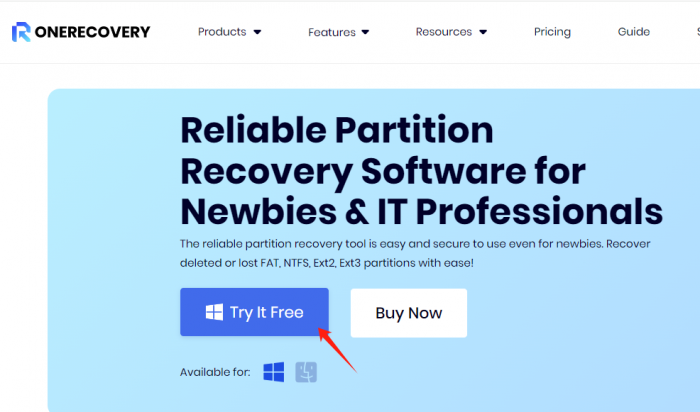
Step 1: Download OneRecovery to your computer.
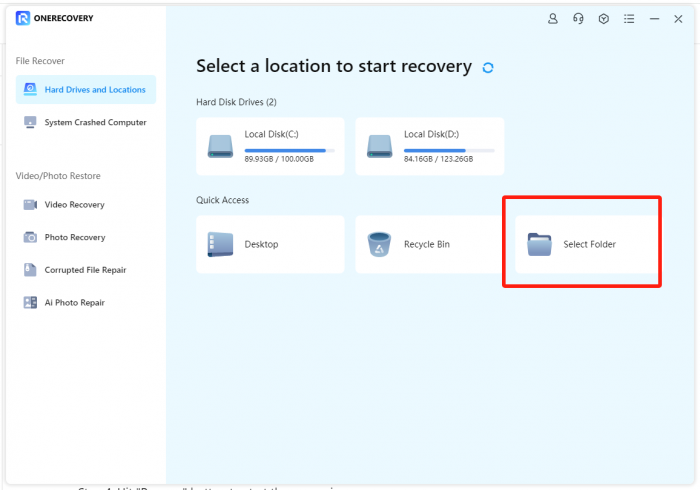
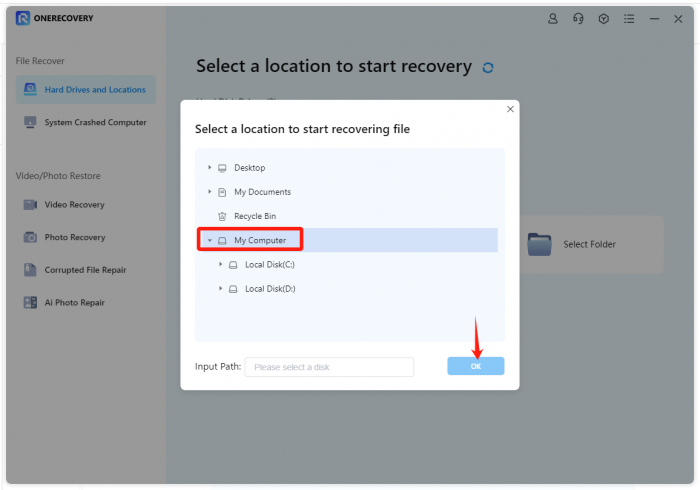
Step 2: Install and launch OneRecovery and scan the whole computer. This step might take a bit longer as the software is deep scanning your computer and digging out as much as data it can.
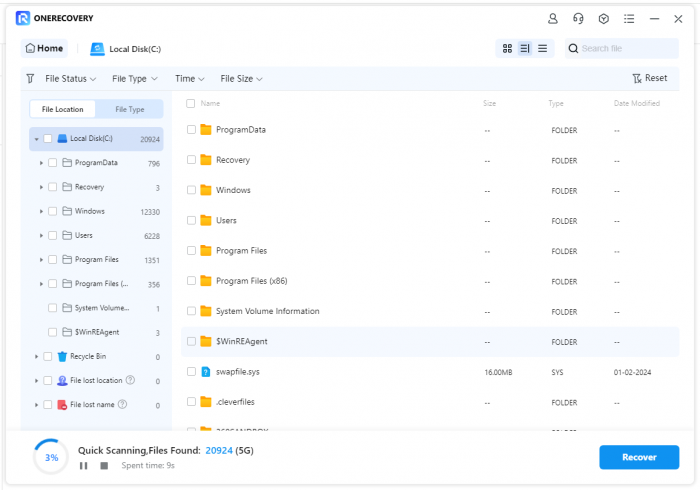
Step 3: Preview the file list and select the files that you want to restore.
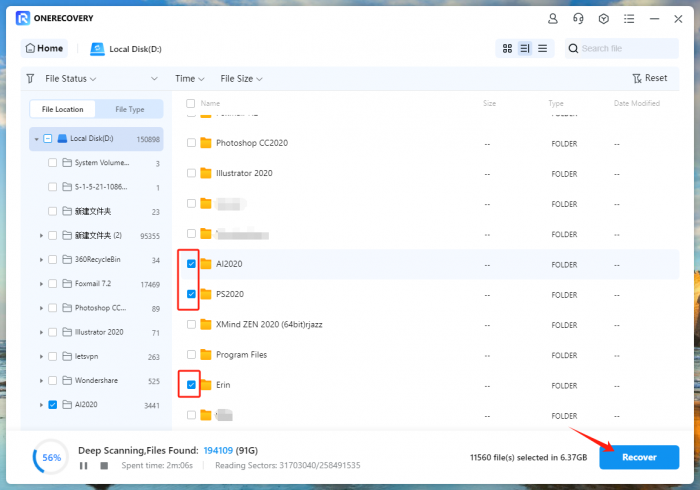
Step 4: Hit the “Recover” button and select a location to start the recovery process.
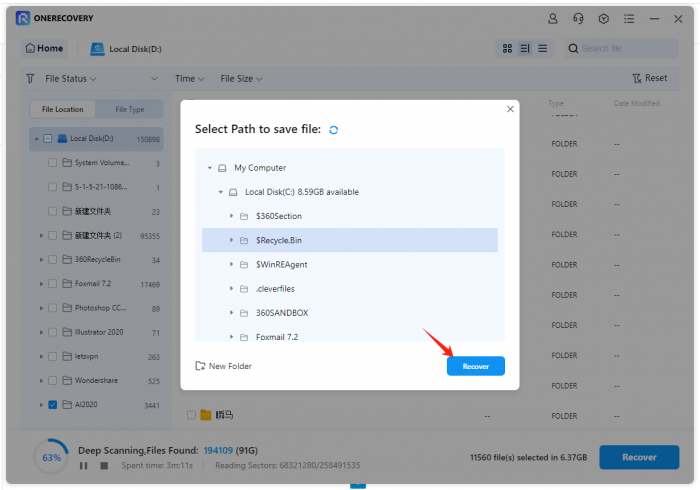
Step 5: Once the process is finished, the files will be saved on your computer. Open the folder to double-check the files.
Bonus Tips: How to Monitor and Maintain Partition Health
While recovering lost partitions is possible, maintenance and prevention are always preferable. Here’s a guideline to monitor and maintain the health of your partition:
Regular Health Checks
Use built-in tools like CHKDSK (for Windows) or fsck (for UNIX-based systems) to perform routine checks on your partitions. These tools can identify and rectify errors that might lead to data loss or partition damage.
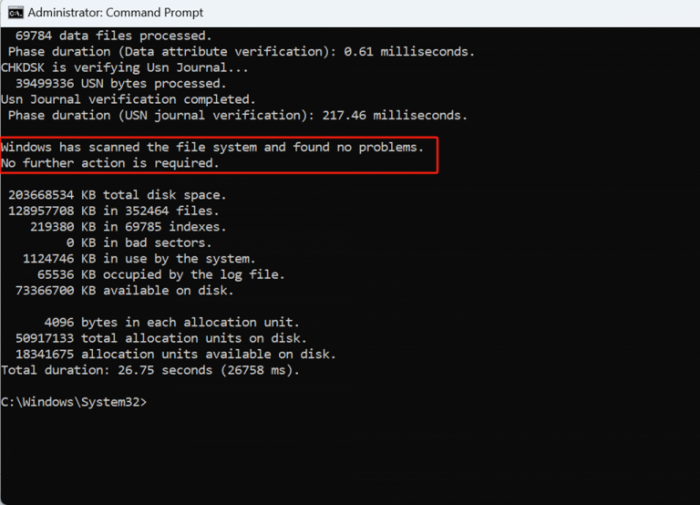
Third-party applications can also be used to assess partition health and performance, offering detailed insights and recommendations.
📚 Read Also: How to Check Hard Drive Health
Monitor Storage Capacity
Ensure each partition has adequate free space. Overfilling can lead to performance degradation and increase the risk of corruption.
Many third-party tools can help visualize data distribution and pinpoint large files or directories, helping in efficient space management.
📚 Read Also: How to Partition an SSD
Defragment Partitions Regularly
For HDDs, it’s beneficial to defragment partitions regularly, ensuring data is contiguous and improves read/write speeds. However, refrain from defragmenting SSDs as it wears them out faster and is unnecessary due to their design.
Built-in tools like Defraggler or OS-based utilities can be used for this purpose.
Avoid Frequent Resizing
While tools allow for resizing of partitions, doing this frequently can lead to errors or corruption. Only resize when necessary and always back up data first.
Log Monitoring
Modern OS often logs errors related to partitions or file systems. Regularly check system logs to spot and address any unusual activity or errors before they escalate.
Maintain a Proper Physical Environment
As with entire drives, ensure the physical environment is suitable for your computer. This includes preventing overheating, minimizing physical shocks, and keeping the area free of dust and debris.
FAQ
⭐ Does Windows 10 reset delete partitions?
This operation only impacts the Windows partition/drive but does not wipe it out from the disk. The action solely removes programs, settings, and files when opting for the “erase everything” option.
⭐ Can System Restore recover a deleted partition?
No, System Restore cannot recover a deleted partition. It’s mainly for fixing issues with the operating system, not restoring lost partitions. To recover a deleted partition, you’ll need to use specialized partition recovery tools or seek professional help.
⭐ What is the difference between recovery partition and restore partition?
Partition recovery is like a toolbox on your computer that helps regain the data without using external tools. It has system files and tools to troubleshoot issues.
On the other hand, a restore partition is like a time machine for your whole computer. It stores a complete copy of your system, including the operating system and all your stuff. If something goes wrong, you can use it to go back to how your computer was at a specific time.
In simple terms, a recovery partition helps fix small issues, while a restore partition takes your whole system back to an earlier point if something big goes wrong.
Wrapping Up
Partitions play an instrumental role in keeping our data streamlined and organized. It might have been worrying and upsetting to lose your valued partitions before. But now with this comprehensive, novice-friendly guide, you can equip yourself with all the knowledge and skills you will need to figure out the root cause of lost partitions and take measures to bring back the essential data. Don’t forget to recommend this guide to your friends who are struggling with partition loss!
I’m thrilled to be part of the OneRecovery team as a writer. I’m passionate about simplifying the complex world of data recovery and making it easy for everyone to understand. My focus? Well, I love diving into tutorials on hard drive recovery, crash computer data retrieval, photo repair, and many more. But that’s not all—I’m all about exploring the creative side too, so expect plenty of engaging and imaginative posts on various aspects of data recovery software. Join me on this journey as I share insights, tips, and tricks that make data recovery a breeze!





